National Geographic Picture Atlas of Our Universe
Part One: What if there really were creatures on other planets?
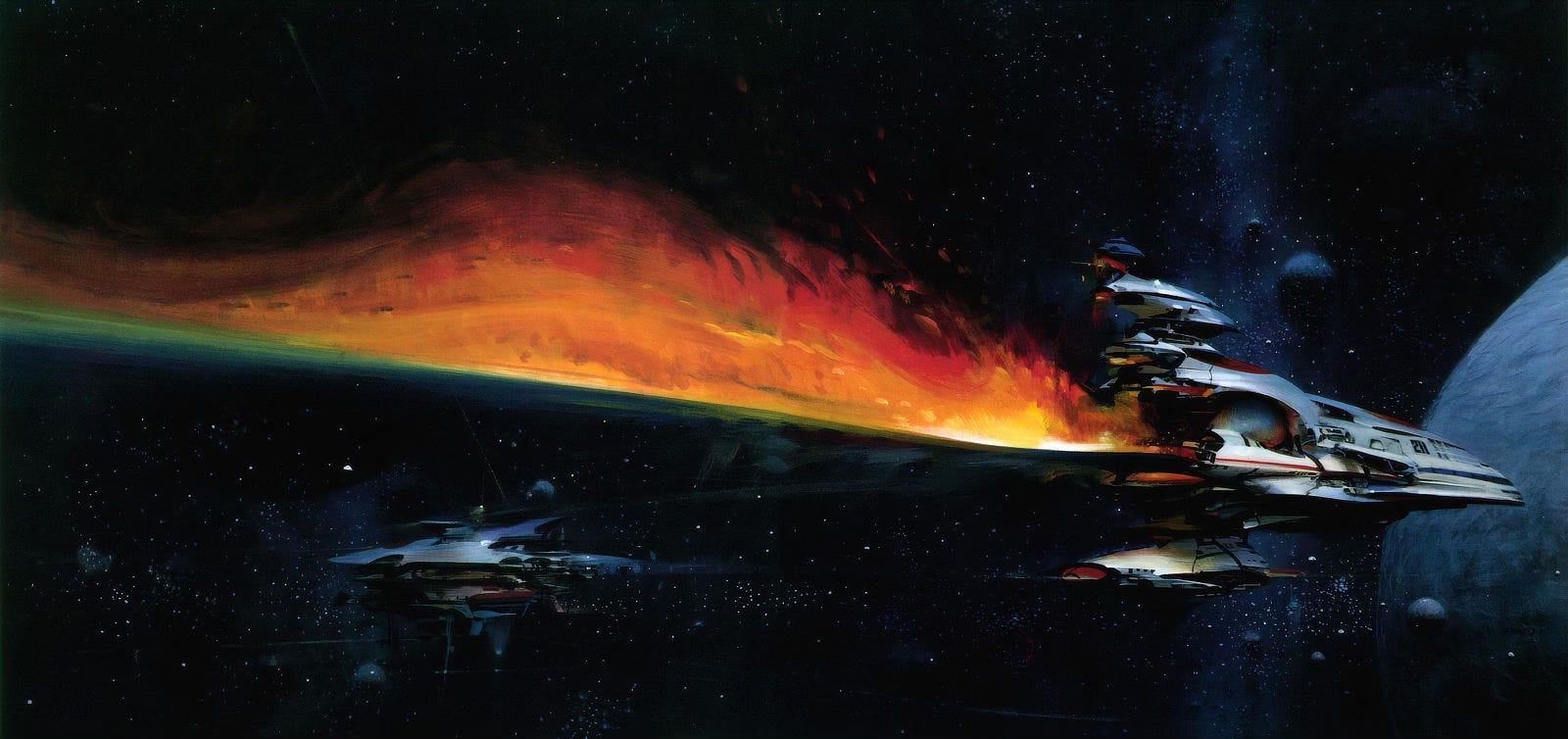
Published in 1980, National Geographic Picture Atlas of Our Universe was among the most successful projects Michael has been involved with. He didn’t provide the cover—that was the stellar John Berkey—but Michael’s work on the interiors is still widely regarded today.
A massive initial print run of 670,000 copies pushed the first edition into stores everywhere where this coffee table book flourished for more than two decades in print. With revisions in 1986 and 1994, the book sold a staggering 2.5 million copies.
Our Universe is a work of science and history authored by Roy A. Gallant. The pages are filled with hundreds of paintings, photographs, and maps that add a unique touch of humanity to the calculated science of astronomy. The book is a visual treat that lit young imaginations ablaze whenever found in schools, public libraries, and—for those lucky enough—family collections.
Posting Our Universe art over the years, I’ve come to realize how much the book has meant to so many as it passed from one generation to the next. It is perhaps my favorite art to feature because of the waves of nostalgia these paintings inspire.
Michael was one of many artists to work on the book. The bulk of his contribution came in the portraits of Roman gods representing celestial bodies, which we’ll feature in Part Two. What particularly delighted readers was the whimsy he captured in speculation of what alien life might look like on other planets.
Michael Everett
What if…there really were creatures on other planets?
Our Universe was a fun assignment, and I’m glad so many people enjoyed the work I did for that project. Someone once asked what my favorite piece from the book was, and that’s hard to pin down. I will say that I had the most fun working on the silly alien creatures the editors came up with.
That section was written by the National Geographic editorial department. They asked me to illustrate their rather whimsical inventions, so I did these little paintings (about the size of my normal concept work) to accompany the text.
Among those, the Jupiter and Venus critters were probably my faves.
Michael Whelan
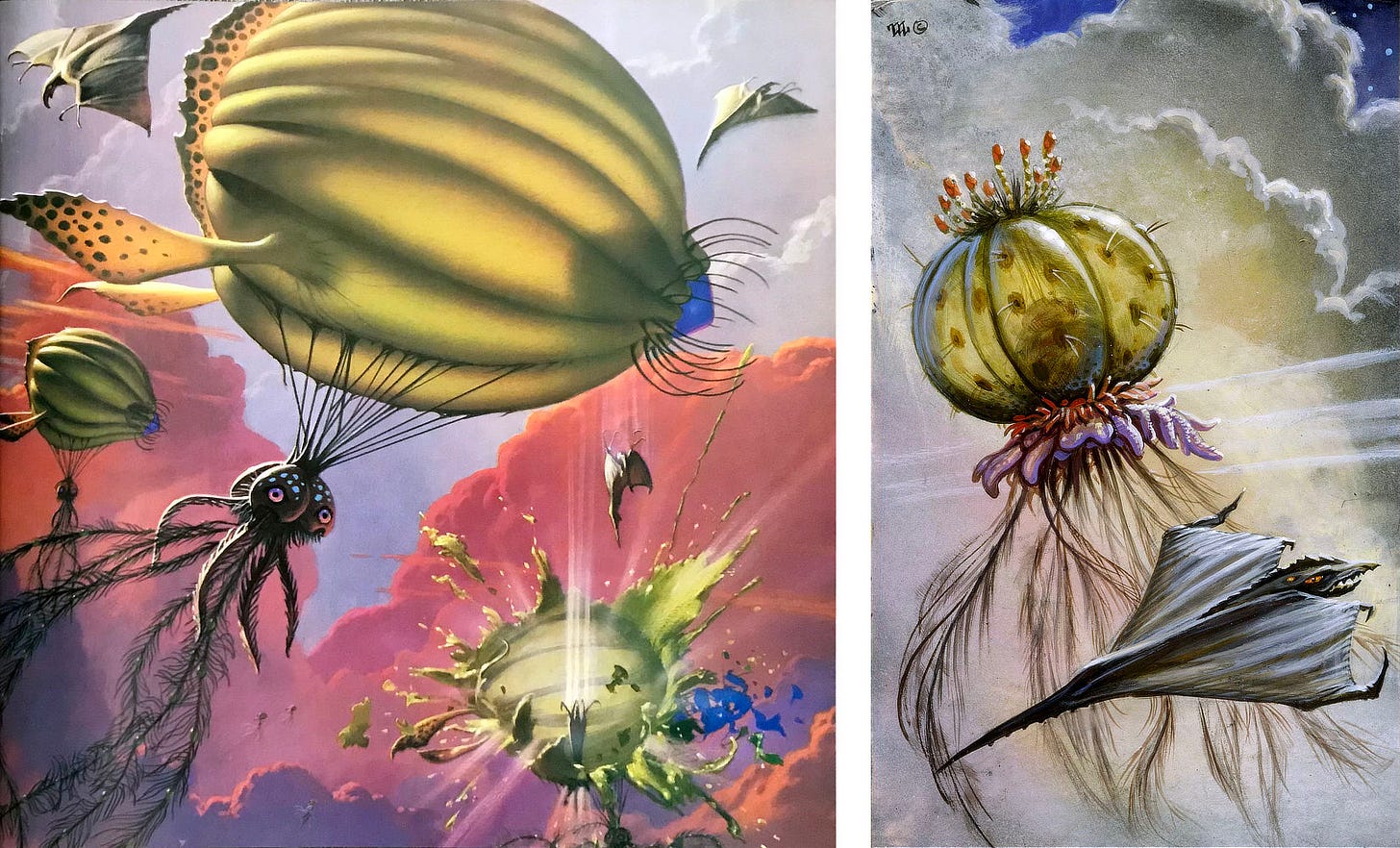
From birth to death, any life in Jupiter’s wild atmosphere would have to stay airborne—there’s no place to stand. Hanging from their gasbags, floating jellyblimps would be easy prey for hungry swordtails. A swordtail uses Jupiter’s strong gravity and its own pointed body to dive right through its victim. All creatures here must avoid winds blowing toward the freezing layers above or the scorching pressures below.
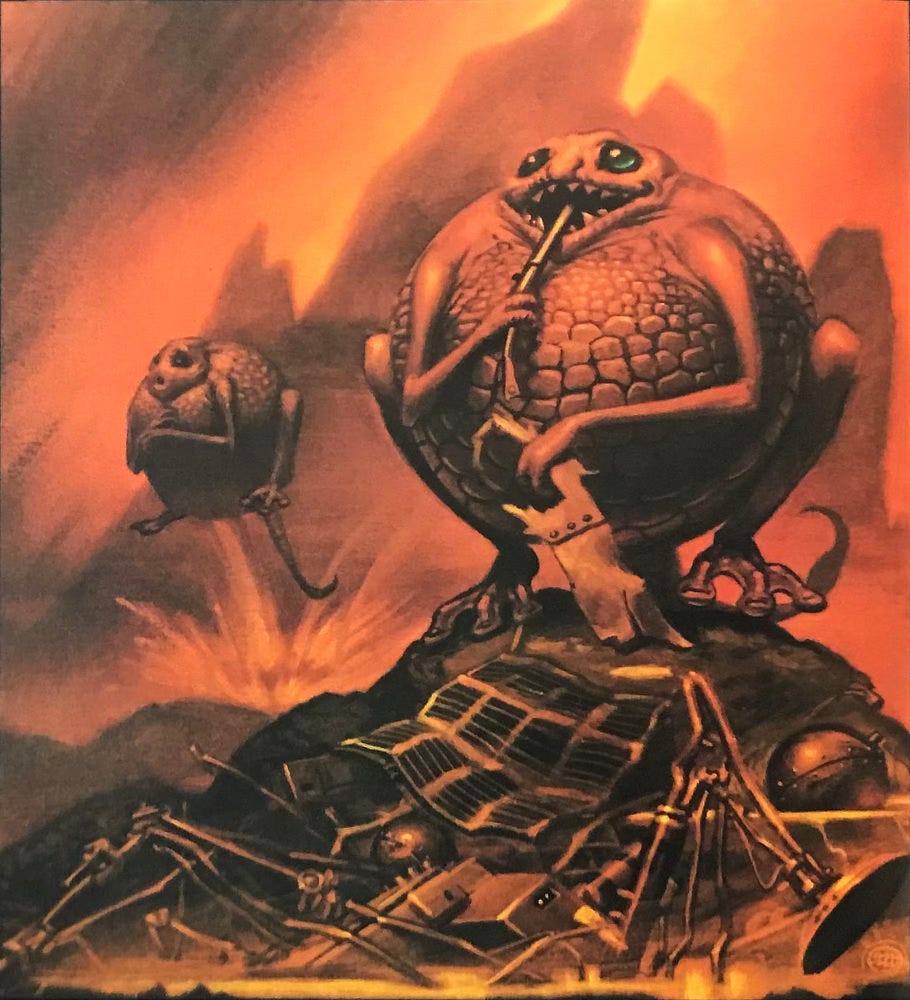
To survive Venus’s heat—lead would melt here—you might need a body that feeds on rock and metal. This oucher-poucher snacks on a space probe from Earth. Venus’s surface is so hot that oucher-pouchers keep shifting from one foot to the other. They travel by bouncing along the ground. Every time one lands, it utters its customary cry, which sounds remarkably like “ouch!”
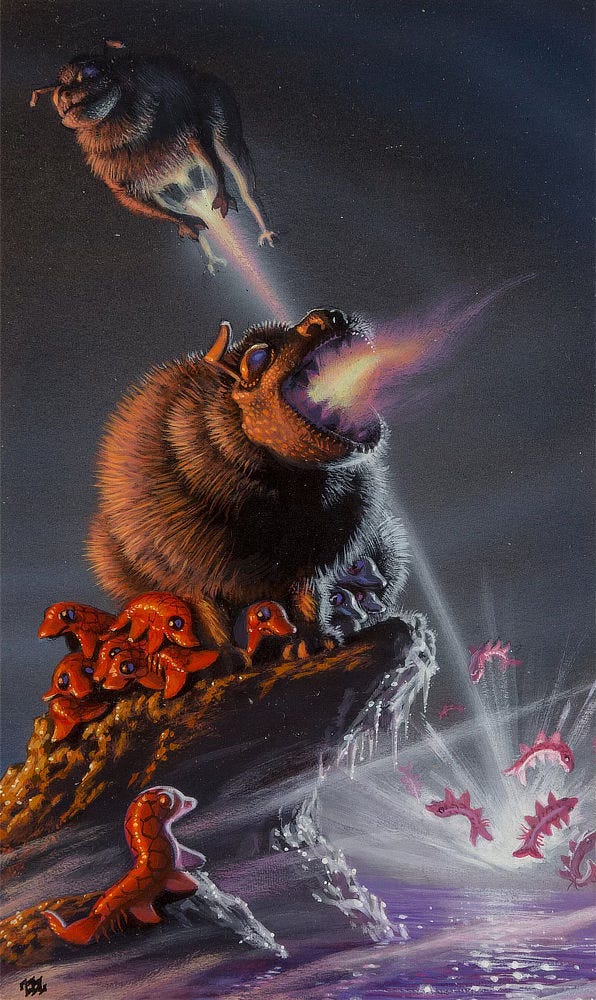
On dim, cold Titan, Saturn’s giant moon, stovebellies might live—perhaps by the icy shores of a methane sea. To avoid freezing, they keep fires burning inside their bodies. How? Stovebellies eat ice, which forms much of Titan’s surface. Their fuel is made of oxygen from the ice and methane from the dense atmosphere. By squirting flame like a rocket, they can make long leaps in Titan’s low gravity. Amphibious fishimanders like to crawl out of the sea and cuddle by a handy stovebelly for warmth—until their host blasts off, sending its guests flying.
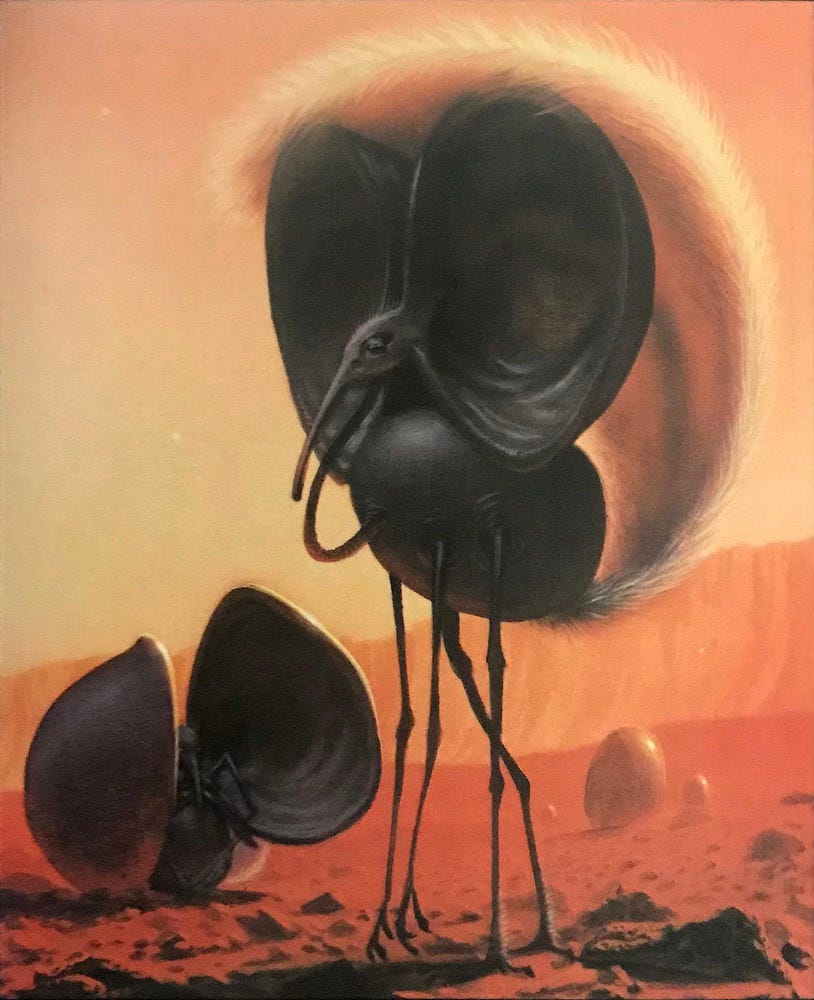
Whisper thin winds hiss along a dry, dusty canyon. Deadly ultraviolet radiation pours from an unshielded Sun. Nightime cold reaches -80°C. Perfect weather for a fellow like the Martian waterseeker. It’s parasol tail can life three meters in Mars’ low gravity, shading it from ultraviolet sunburn. The long snout can probe for pockets of ice under dried-up channels. And the giant ears, needed to hear well in the thin air, also serve as blanket: In Mars’ frigid nights the waterseeker stays snug by clamping its ears tightly around its whole body.
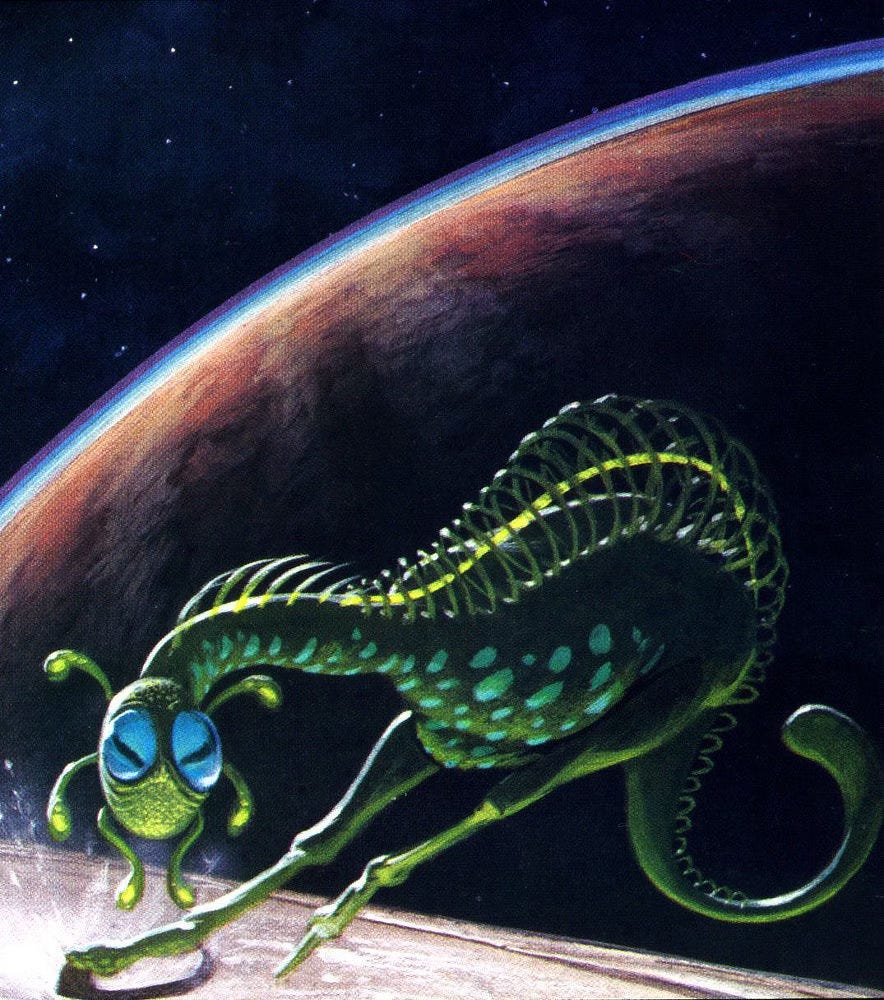
Flat ice covers the second of Jupiter’s four major satellites. Europa may be the smoothest globe in the Solar System. And here brinker-roos might frolic, on feet shaped like skates. They lead a carefree life, living on pure energy as they zoom across the endless frozen plains. Since there’s no air to breathe and no food to eat, brinker-roos need no mouths or noses. Their green skins can carry out photosynthesis in sunlight, as plants do. And the coils on their backs pick up energy from Jupiter’s strong magnetic field, which Europa must travel through as it orbits the giant planet.
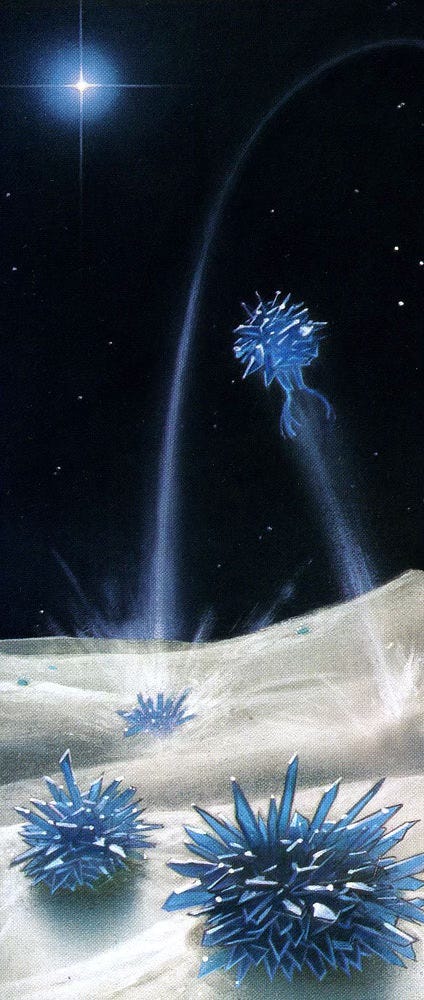
Electrical, crystal beings like these Plutonian Zistles would find -250°C too hot for comfort. At night, when its colder still and electricity flows perfectly, zistles feel best. Highly intelligent, they spend most of their time radioing great thoughts to each other. When zistles do get going, they can spring 20 meters high in Pluto’s feeble gravity. Zistles think Pluto is the only planet with life—it’s too hot everywhere else!
Weekly Art Recap
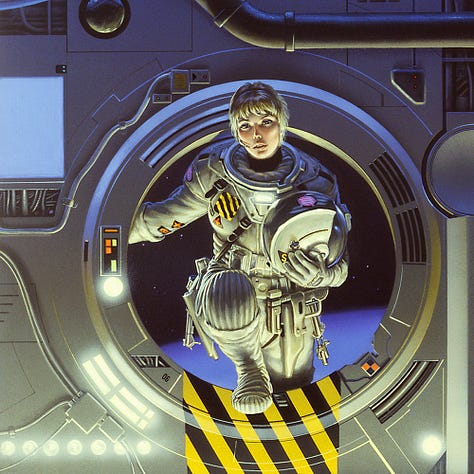





Distant Stars - wraparound cover for Grand Master Samuel R. Delany
The Crossing - another rumination on what comes after our passage through life
The Pride of Chanur - first cover in a beloved series by Grand Master C.J. Cherryh
Edgedancer - a caution that all good things come to an end
Pretty Please - a fan favorite from the 2022 Leftovers & Palette Gremlins gallery
Gift from the Sea - painted for a calendar in 2005, revised for DragonCon in 2011
Coming Wednesday - 2025 Leftovers & Palette Gremlins #2
The next reveal in the 2025 Leftovers & Palette Gremlins gallery arrives on Wednesday, February 19 at 11am EST.
This small original painting will be available for purchase in our shop at the same time. An exclusive preview of the original art will be available for our paid subscribers on Substack.
Subscribe so you don’t miss a thing…
If you like in-depth content about Michael Whelan’s art, please consider subscribing. Our weekly newsletters are free, and we offer additional perks like original art previews for paid supporters.







What about Footfall! A masterful novel with a brilliant cover.
Whoa! I've been a fan of Michael Whelan's work since I was blown away as a 5th grader when I got the John Carter series for Christmas. About that same time we had the "Our Universe" in our house. I spent countless hours marveling at the "what might be out there" ideas and imagery. But not until today did I discover that much of it was Michael's!